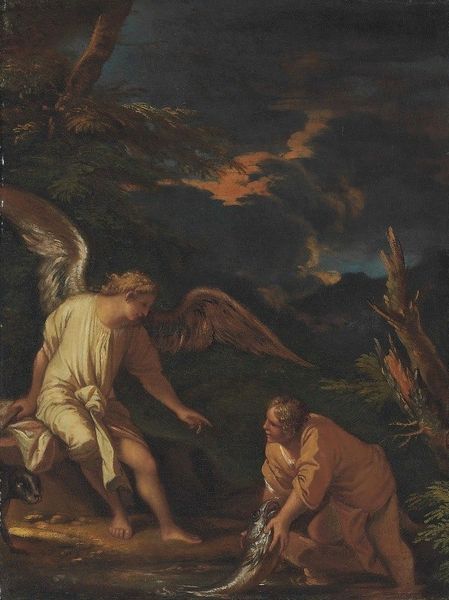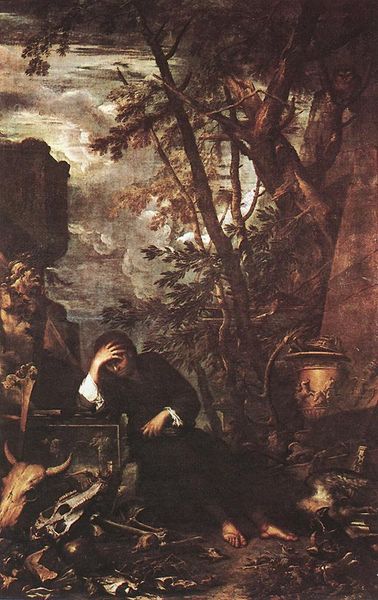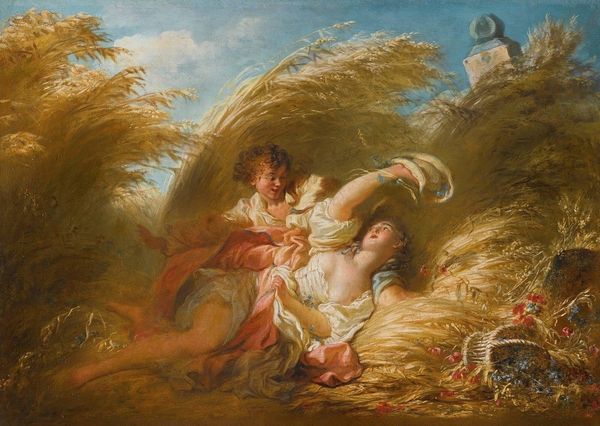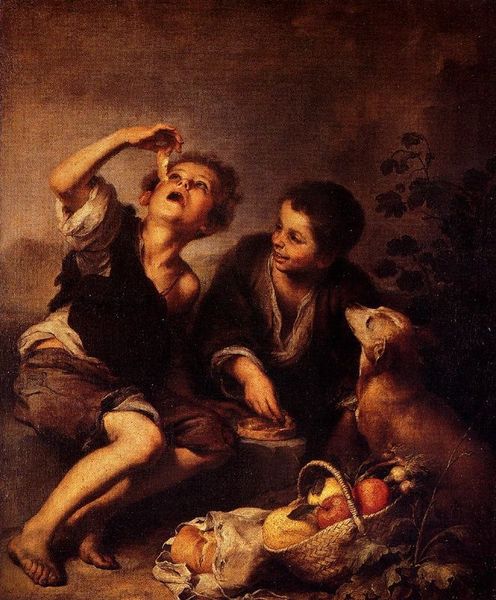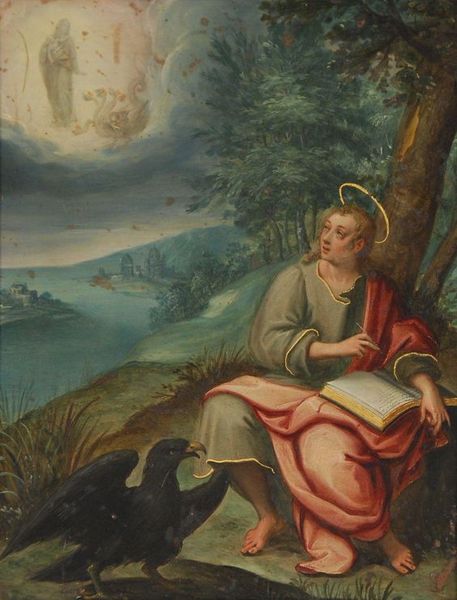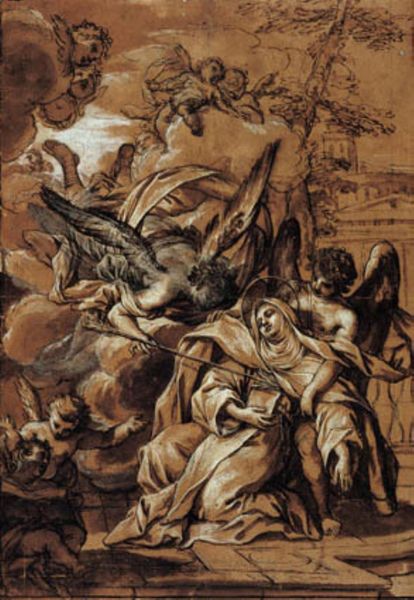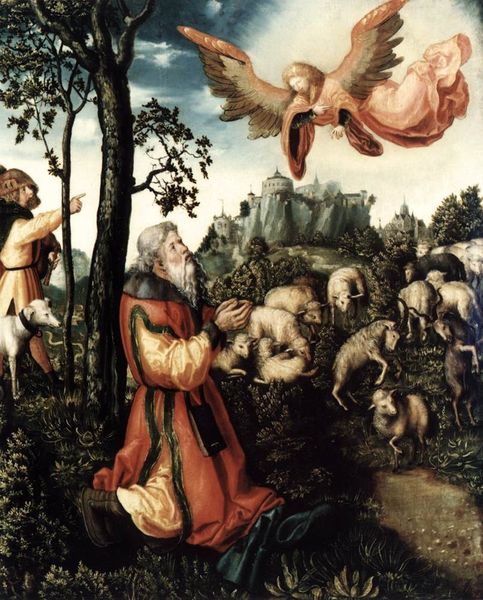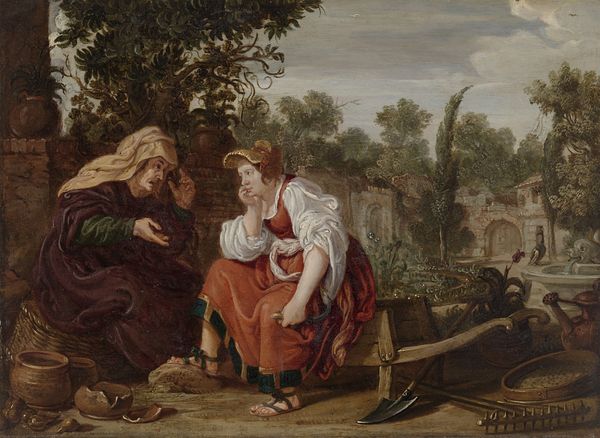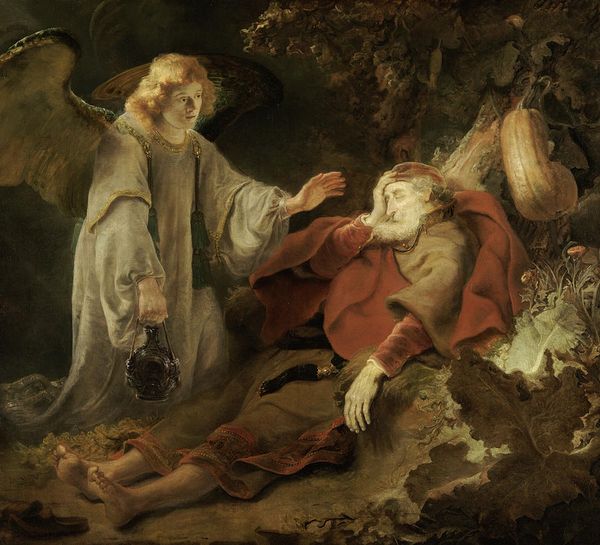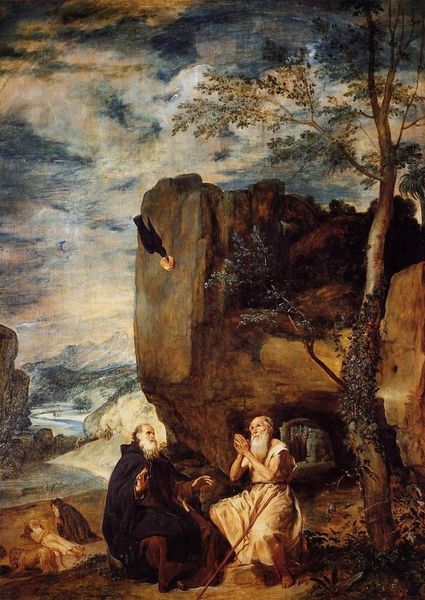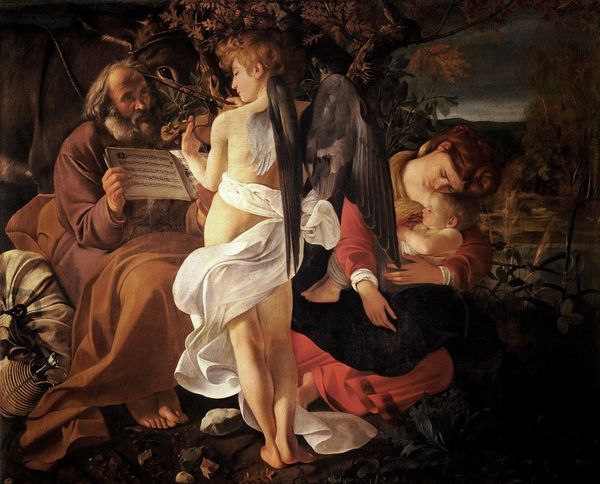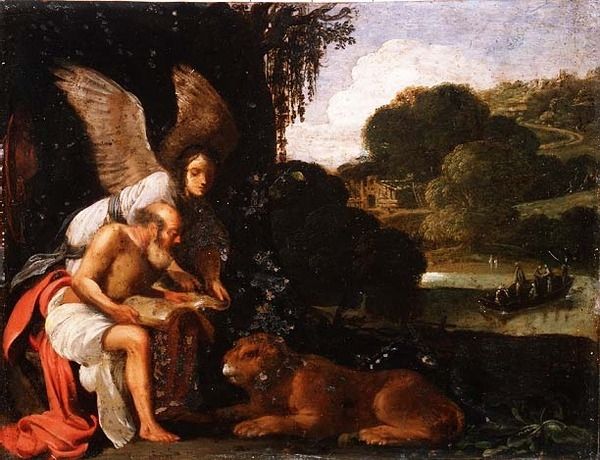
painting, oil-paint
#
narrative-art
#
baroque
#
dutch-golden-age
#
painting
#
oil-paint
#
landscape
#
figuration
#
genre-painting
Copyright: Public domain
Editor: This oil on canvas, "Merry Couple," by Jan Steen, feels…charged. There's this sense of both playful affection and potential unease, especially with the couple's interaction and the rather conspicuous birdcage hanging above. What can you tell me about the historical and material context that would've shaped a painting like this? Curator: Let’s think about this Dutch Golden Age landscape not just as an aesthetic object, but as a commodity. Consider the pigments: Where did Steen source the ochre for the earth tones? The lead for the highlights? How did the economics of trade shape his palette and, consequently, the painting’s visual language? Editor: So, it's not just about artistry but about the literal materials and their accessibility? Curator: Exactly! Think of the canvas itself – linen, likely imported. And Steen wasn’t simply creating; he was producing a piece of material culture for a market. How did the demands and values of that market influence his subject matter, his style, even the size of the work? Was "Merry Couple" a reflection of genuine leisure or a crafted illusion for a burgeoning merchant class? Editor: That makes me look at that basket of goods differently. Not just a picnic, but…evidence of trade and prosperity. Curator: Precisely! Consider the genre scene. These "everyday" scenes are incredibly constructed realities, fueled by very specific resources, created and sold within the machine of the Dutch economy. We see not just a “merry couple,” but also an instance of labor, and commodification deeply entrenched into it, by using labor as raw material to deliver meaning and wealth to Jan Steen, who, in turn, distributes that to art traders and patrons alike. Now that this exchange happened and this artifact still exits, is this relationship equally present today? Is our appreciation built around an unacknowledged consumption that hides labour conditions we may never know or want to talk about? Editor: I've never thought about it that way before – the painting as a product shaped by economics and production. It definitely gives the work a completely different weight. Thanks! Curator: Indeed. It reminds us that art doesn’t emerge from a vacuum but from a complex web of material and social relations, and that our modern understanding and access still remains rooted within that legacy of production and consumption.
Comments
No comments
Be the first to comment and join the conversation on the ultimate creative platform.
